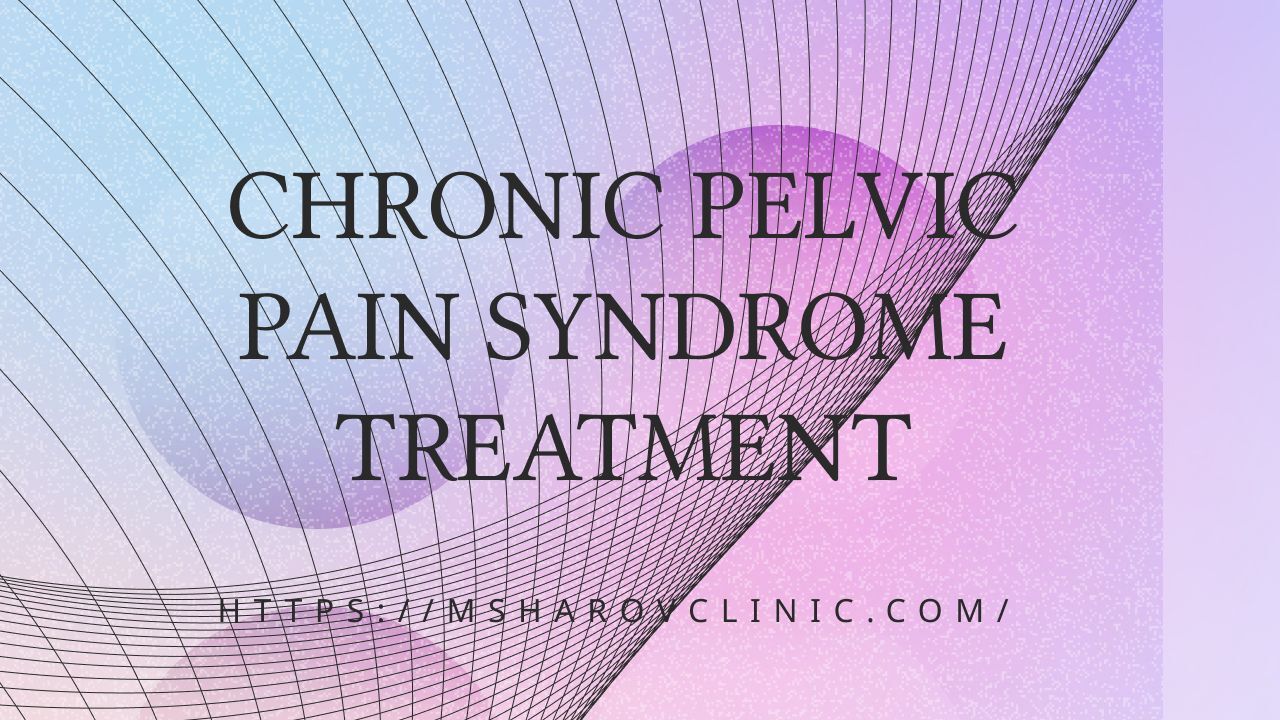The Chronic Pelvic Pain Syndrome (CPPS), also known as the treatment of chronic pelvic pain syndrome, is a complex condition characterized by prolonged pain in the pelvic area lasting more than six months. The causes of this syndrome can be diverse and are not always immediately identifiable. This condition affects both women and men and significantly impairs quality of life. Let's explore possible approaches to treating CPPS.
Steps for Treating Chronic Pelvic Pain Syndrome
Diagnosis of Causes
Firstly, it’s crucial to conduct extensive diagnostics to determine potential causes of chronic pelvic pain. This may include:
Medical evaluation and symptom analysis.
Physical examination.
Ultrasound imaging of the pelvic organs.
Blood and urine tests to assess infection or inflammation markers.
Use of imaging techniques such as MRI or CT scans.
Laparoscopy to diagnose undetected pathologies.
Pharmacological Treatment
Nonsteroidal anti-inflammatory drugs (NSAIDs): help reduce inflammation and alleviate pain.
Antidepressants and anticonvulsants: may be prescribed to treat neuropathic pain.
Hormonal therapy: useful for conditions like endometriosis or other gynecological disorders.
Antibiotics: if necessary to treat hidden infections.
Physiotherapy
Strengthening and relaxation exercises: include Kegel exercises and other methods aimed at strengthening the pelvic floor muscles and reducing tension.
Massage and manual therapy: help decrease muscle spasms and improve blood circulation.
Behavioral Therapy
Cognitive-behavioral therapy (CBT): can assist with managing stress and emotional states associated with chronic pain.
Relaxation techniques: such as yoga and meditation, can enhance overall well-being.
Surgical Methods
If conservative treatments do not yield results, surgical intervention might be required to correct identified pathologies, such as removing fibroids or endometrial lesions.
Alternative Treatments
In some cases, alternative therapies such as acupuncture, electrostimulation, and biofeedback may prove beneficial.
It’s important to understand that CPPS treatment often requires a comprehensive approach and individualized therapy selection based on specific symptoms and the underlying cause of the syndrome. Regular consultations with healthcare professionals and interdisciplinary collaboration among specialists play a critical role in effectively managing the syndrome.
Chronic Pelvic Pain Syndrome Treatment
Steps for Treating Chronic Pelvic Pain Syndrome
Diagnosis of Causes
Firstly, it’s crucial to conduct extensive diagnostics to determine potential causes of chronic pelvic pain. This may include:
Medical evaluation and symptom analysis.
Physical examination.
Ultrasound imaging of the pelvic organs.
Blood and urine tests to assess infection or inflammation markers.
Use of imaging techniques such as MRI or CT scans.
Laparoscopy to diagnose undetected pathologies.
Pharmacological Treatment
Nonsteroidal anti-inflammatory drugs (NSAIDs): help reduce inflammation and alleviate pain.
Antidepressants and anticonvulsants: may be prescribed to treat neuropathic pain.
Hormonal therapy: useful for conditions like endometriosis or other gynecological disorders.
Antibiotics: if necessary to treat hidden infections.
Physiotherapy
Strengthening and relaxation exercises: include Kegel exercises and other methods aimed at strengthening the pelvic floor muscles and reducing tension.
Massage and manual therapy: help decrease muscle spasms and improve blood circulation.
Behavioral Therapy
Cognitive-behavioral therapy (CBT): can assist with managing stress and emotional states associated with chronic pain.
Relaxation techniques: such as yoga and meditation, can enhance overall well-being.
Surgical Methods
If conservative treatments do not yield results, surgical intervention might be required to correct identified pathologies, such as removing fibroids or endometrial lesions.
Alternative Treatments
In some cases, alternative therapies such as acupuncture, electrostimulation, and biofeedback may prove beneficial.
It’s important to understand that CPPS treatment often requires a comprehensive approach and individualized therapy selection based on specific symptoms and the underlying cause of the syndrome. Regular consultations with healthcare professionals and interdisciplinary collaboration among specialists play a critical role in effectively managing the syndrome.
Chronic Pelvic Pain Syndrome Treatment

